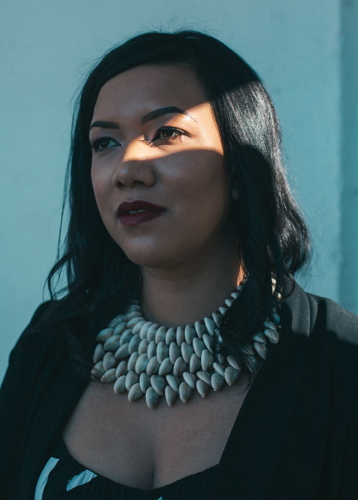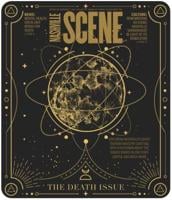
In some quarters, poetry is seen as an archaic, rarified art. Tiana Clark’s immersive narrative poetry is anything but — it doesn’t flinch as it navigates uncomfortable issues ingrained in American culture, often focusing on the tangled relationships between race, gender, class and privilege. In 2016, the Vanderbilt MFA candidate published her first chapbook, Equilibrium, and she spoke with the Scene during a break from writing her first full-length collection. Her poem “Nashville,” which uses a racist remark as a lens to look at the history of hot chicken, is due to be published this spring in The New Yorker.
How did you discover that poetry was the way you wanted to communicate? I went to Hume-Fogg High School downtown. There was a creative writing class there under Bill Brown — he’s this amazing poetry teacher. The first day of class, he was like, “Everyone write a poem.” I was thinking, “Uh, isn’t this what you’re supposed to teach us how to do?” So we’re all writing, and then he stopped us about 20 minutes in and asked, “How many of you rhymed?” And a third of the class raised their hand. And he’s like, “Did you know you can write an amazing poem, and you don’t have to rhyme?” Which I know is rudimentary now, but for a 15-year-old, it was like, “Oh, here’s this other container that you can flow through.” …
I thought all the poets were just white guys that were dead. He would read us these contemporary poets every day, Sharon Olds and Li-Young Lee, and I was like, “Oh, wow! You can say that? You can do that?” He gave us permission and time and space to write whatever we wanted, so all my teenage Daria angst flowed out in this container that was part prose but part poem, where it was lyrical and musical, and I could kind of siphon and wrangle all this rage and frustration I felt at that age.

What’s on your mind as you put your book together? The book is definitely about race. The tentative title is I Can’t Talk About the Trees Without the Blood. Whenever I look at a tree in the South, I’m always going to see the blood on that tree. I’m always going to see the strange-fruit history that exists within that tree. … The hinge of the book is this very long, epic poem called “The Rime of Nina Simone,” which is off of “The Rime of the Ancient Mariner” by Samuel Taylor Coleridge. It’s about using the canon and abusing the canon. ... I had just watched the Nina Simone documentary on Netflix, which is so good, so she was on my mind. A lot of dead people haunt me. She was kind of hovering, and I was like, “What if Nina Simone stopped me on my way to class, and what if she embodied the Ancient Mariner? She was a symbol for me of a black woman artist that struggled with art, and activism with her art, in a very complicated, nuanced way. What would our conversations look like?”
And so it’s a long, 10-page poem that interacts with a speaker, who’s very much a slice or a shadow of me, kind of dealing with being at Vanderbilt, being in workshop and often being the only black or brown person in workshop. There’s lines in there where she’s interrogating me, like, “Do you really want to do this? If you’re going to really write about this stuff, do you think they’re going to want you, or your black pain? If you’re ready for this, you’re going to have to enter that pain and that trauma constantly. Are you ready to go into the middle of it and let that pain ping you so that you can keep writing about it? You’re going to have to be strong to do it.”
She becomes this foil for me. Really, I’m talking to myself. I’m going to have to be entering this trauma again and again and again — the trauma of racism, the trauma of my life — to continue as a writer. I’m excited for it to come out.






